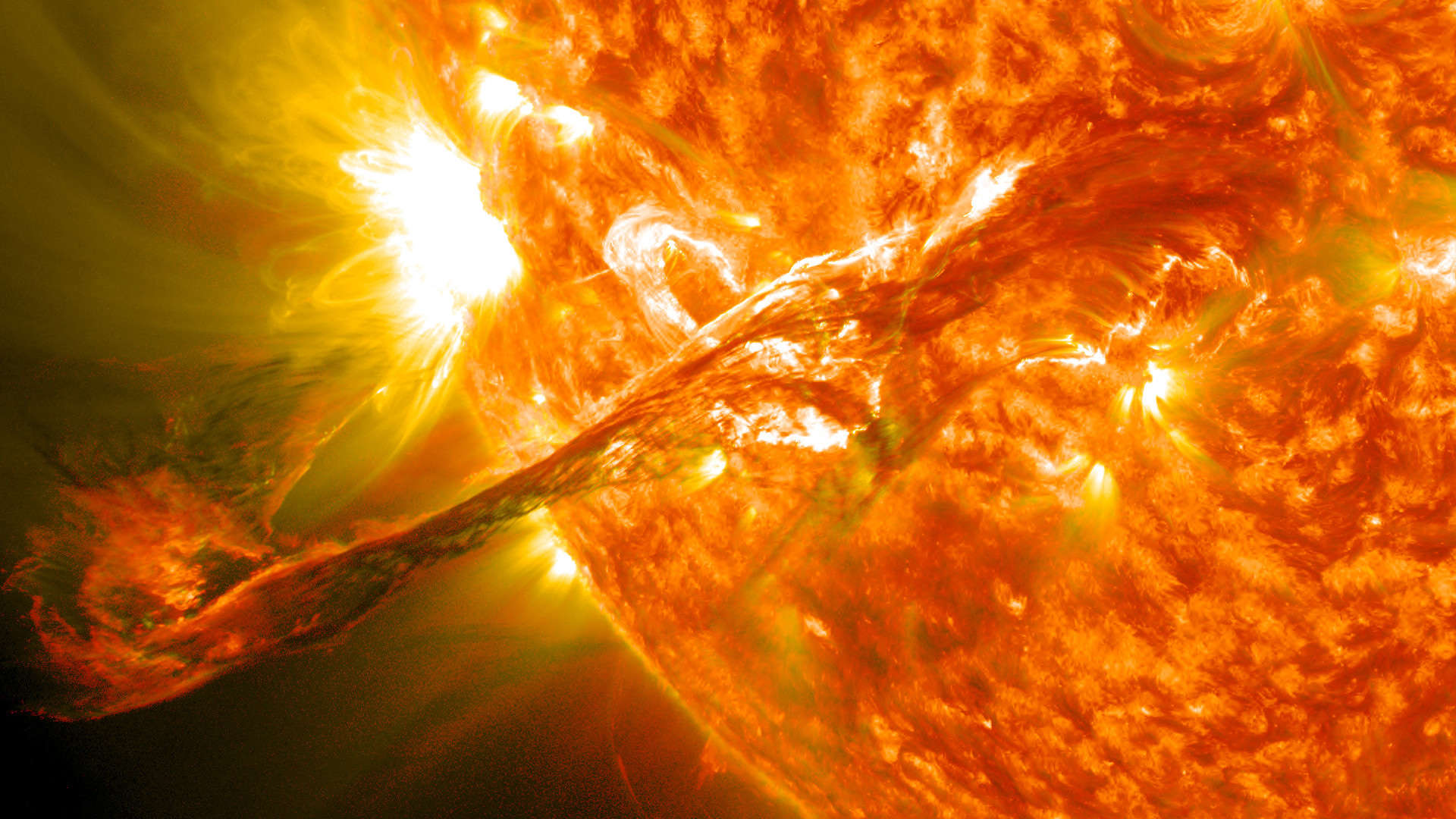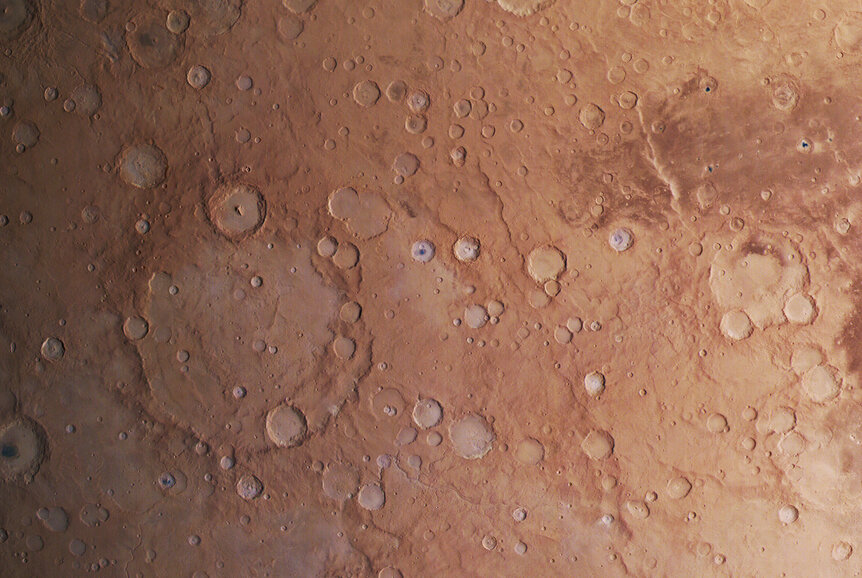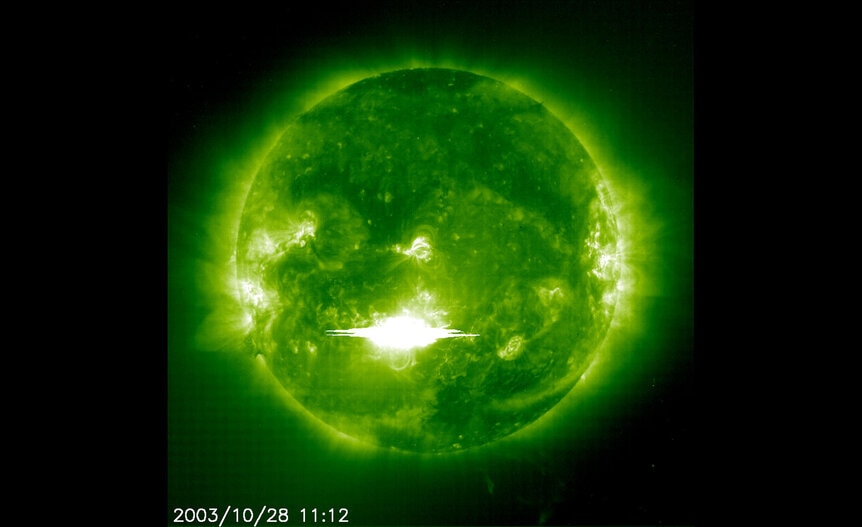Create a free profile to get unlimited access to exclusive videos, sweepstakes, and more!
Want to go to Mars? Better leave when the Sun is active to minimize galactic radiation poisoning

If the idea of sending humans to Mars is a romantic one, the reality of it is a bucket of cold water.
Going to Mars is hard. Something like half of all missions have failed for one reason or another, but adding humans into the mix makes things far harder. We inconveniently need air and water and food, for one thing, but we also need the environment to be safe.
Radiation is a direct threat to that.
In this case I mean subatomic particles zipping around space at extremely high velocities. These can penetrate the human body and smack into our DNA molecules in the cells, which can cause replication errors (bad) or do so much damage the cells die (worse). In small doses the body can repair the damage, but if the dose is too high — either through one big event or low levels for a long time — it can be fatal.
Space is soaked in these particles. They come from two sources. One is the Sun itself, which blasts out particles as part of the solar wind. It also has explosive eruptions called solar flares and coronal mass ejections (CMEs) that hugely magnify the number of particles.
The other source is galactic cosmic rays, which are subatomic particles from the galaxy itself, generally created when stars explode and accelerate particles to high energies.
The Sun has a magnetic cycle, where its magnetic activity increases and decreases on an 11-year cycle. When the activity is at a max the solar wind is denser (bad), and you get more storms like flares and CMEs (worse). But the funny thing is that the stronger solar wind acts as a shield from galactic radiation, because those cosmic rays have to get through the wind to get to us. So when the solar radiation is at its worst the galaxy is at it best, and vice-versa.
This means the radiation environment of a Mars-bound astronaut can change depending on when the flight launches and how long it takes. How then do we optimize a flight to the Red Planet?
A team of scientists just published a study looking into that. They used real solar and galactic radiation data from 1998 – 2006 to simulate what kind of shielding would work best.
An aside: You might think lead works best, but in fact that’s only good for high-energy electromagnetic radiation like X-rays and gamma rays. For subatomic particles, lead is actually bad. The particles slam into lead nuclei and create secondary radiation (like shrapnel): More high-speed particles that then shower into the spaceship. In fact, the lighter elements are better, like aluminum. Things with lots of hydrogen are even better, like carbon composites and water.
Using known physics of radiation and how it’s absorbed, the team ran computer simulations on its effects. They modeled humans as a sphere of water 35 centimeters wide (a little over a foot) with a hollow region in the center 10 cm wide (to mimic the lungs and other open spaces inside us), which as far as physics goes is pretty close to what we are. They then virtually put this water ball inside a spherical aluminum shell to represent the spaceship. The shell has an inner cavity two meters wide, and then they varied the outer diameter to represent different spaceship hull thicknesses (like, 0 cm, 1 cm, 3 cm, etc).
What they found is that solar particles tend to always diminish more with a thicker shell, but galactic radiation is more complicated. It drops as the shell gets thicker until it reaches a certain thickness, then secondary particles start to become a problem and the dose of radiation absorbed by the “human” in their models gets worse.
The best thickness they found is between 7.5 and 11 cm. That balances the effectiveness against both kinds of particle radiation.
However, it’s more complicated than that. The energies of particles in galactic and solar radiation are different, and have different properties. That means that the balance between them can change over the Sun’s magnetic cycle. The trip to Mars takes at least six months, and can take as much as nine, so the solar cycle can change over that time.
So when during the solar cycle is the best time to launch? The team looked into that with their models and found, perhaps surprisingly, it’s best to launch at solar maximum! This gives a high flux of solar radiation, but it tends to drop over time, and the mix of the two kinds of particles is shielded best for the duration of the trip.
Looking at the amount of radiation absorbed by a human, they found that they will get a dose of 0.5 Sievert (the unit of radiation absorption) in a trip lasting on average 1.9 years — a lifetime dose of 1 Sievert is the NASA limit for astronauts, so a trip to Mars and back would have to last less than 3.8 years of flight time. That seems doable… though the surface of Mars itself suffers decently high radiation levels, so that has to be accounted for, as well as flares and CMEs that can dramatically increase the solar contribution.
Like I said, it’s complicated.
In practical terms, this means crewed flights to Mars need to carefully consider radiation — how to best protect the precious and delicate crew, both in launch times and ship construction. Starship, the SpaceX vehicle being designed for Mars flights, has a steel hull, which is worse than aluminum, but may be too thin to create much secondary radiation. If the cargo (food and such) is placed in a way to add to shielding, that could help. A lining of water inside the hull would be good too, and has to be carried along anyway. Aligning the ship such that the back end points toward the Sun might eliminate a lot of solar radiation issues as well. Elon Musk, SpaceX CEO, has mentioned radiation issues with Starship but tends to be a little cavalier in dismissing the issue. In the two years since that article was written I have not heard anything more on this, and it needs to be addressed.
Happily, trips to the Moon are much shorter, just days instead of months, and astronauts won’t be exposed nearly as long. If we eventually want long-term habitats on the Moon and Mars, living underground may be the best option. That could involve exploring lava tubes, long caverns emptied out by flowing lava eons ago. The European Space Agency is exploring that idea.
When I was a kid, feeding on a non-stop diet of old sci-fi movies, I thought the biggest hazard was getting hit by meteoroids, not subatomic particles. Nature can be somewhat less Hollywood friendly. Space is a dangerous place, and if we want to move outside our comfortable and radiation-protected Earthly home, were going to have to know what those dangers are and do our best to minimize them.




























